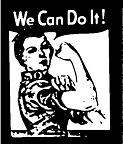home / teaching reading / homeschooling / gifted kids / breastfeeding / crafts |
|
|
"A good education for every child
does not mean the same education for every child. " Please use what works for you and your
child and ignore the rest. Every
child is different. If this
information does not seem to be a good fit for your particular child, then
keep looking and experimenting until you find what works. This Web Page by Pauline
Harding for Art Nurk, hardingpj@yahoo.com |
Children need to understand how a book works. This includes knowing which way to hold the book and which direction to turn the pages – even the fact that the text goes from left to right. Children who are read to usually learn these things by example, but some children need to be specifically taught. When reading aloud, you can make silly “mistakes” – hold the book upside down, start at the back of the book, etc., and let your child correct you. “Are you sitting comfortably? Then we’ll begin!” The people who made the book Teach your children about the people who make the books. You can cover these each time you begin a book. “Jane Bakes a Cake, by John Smith, illustrated by Sue Jones, Greenwillow Books, New York”. Just by mentioning the author and illustrator when you read a book, you will find that you will begin to have favorite authors and illustrators. You can seek out other books by your favorites. This models for your child one way to go about choosing a book. You can explain that the author thinks up the story, and the illustrator draws the pictures, but the publisher actually takes the story and the pictures and makes lots of copies and makes them into books. After your child has some experience with books, you might want to read a book about how they are made. You may also want to talk about how the illustrator created the pictures – did they use crayons, or markers, or watercolors, or collage? It might be fun to try out some of these techniques yourselves. Mentioning the author is also important in non-fiction books. As we enter the Internet Age, there is no shortage of information, some of it of dubious quality. “Who says so?” is an important question for kids to begin to ask. Read the author biography and talk about how the author might have come to write the book. “The end.” I find it satisfying to say “the end” at the end of some books. Don’t know why! Parts of a non-fiction book Familiarity with the parts of a non-fiction book is an important skill for comprehension and for doing research. Now your four-year-old doesn’t need to do research, of course, but gaining familiarity with non-fiction books and how they work can be useful beginning in early elementary school – and it’s easy to teach. Non-fiction books for early readers are increasingly easy to find, and good ones include a table of contents, an index, and maybe even a glossary, even if the book is only a few pages long. Table of Contents – if you read a book with several stories in it, you might want to show how the table of contents works. “Hmmm, this book has several stories in it. I want to read The Best Nest. Let’s look in the Table of Contents to see where it is. Sam and the Firefly – no, that’s not it. Oh, here it is – The Best Nest, page 67.” Index – you probably won’t use this much, but you can mention what it is and why it’s there. When you do need to use it, be sure to verbalize and show what you’re doing. Even just mentioning what it is when you come to that page can be helpful. We have several books of poetry that include a title index and an index of first lines and sometimes a subject index. Literary & Language Terms- For Older Kids Some terms you can introduce when they come up naturally – now don’t obsess over this, and if your child isn’t interested then don’t bother, but some kids love this stuff. Alliteration – “seven silly swans” is an example of alliteration. Isn’t “alliteration” a fun word to say?! Homonyms – sound the same, but have different meanings, same spelling. “Eek! I see a bear!” vs. “I can’t bear it!”. Homophones – sound the same, different meaning, different spelling – night and knight; bare and bear; rite, write, right and wright. I wouldn’t obsess over this – just the idea that there are such words is fun to consider. There are some sites on the web that list examples. Literary reference – when the author of one book makes reference to another. For example, in Edward Eager’s books the characters often read E. Nesbit’s books. Other terms you might want to introduce include plot, character, setting, theme, protagonist (the good guy), and antagonist (the bad guy). |
